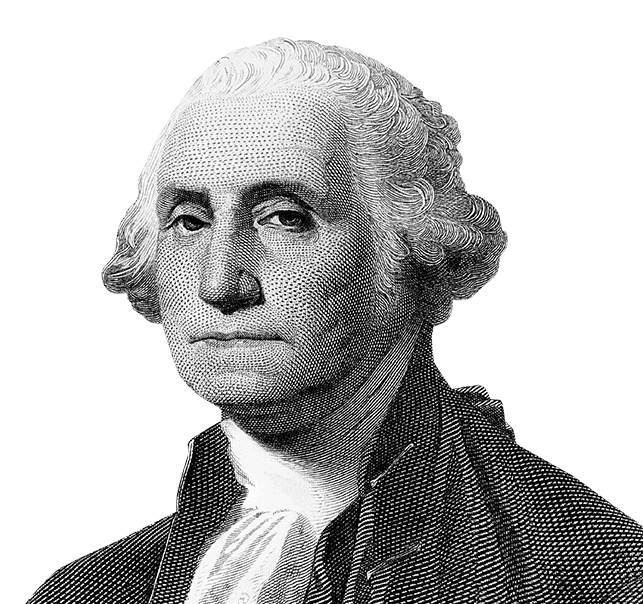Mount Vernon's Civil War symbolism
It remained whole during the war — a sign of America's early promise and future hope.
Story by Rachel Smolkin and Brenna Williams, CNN
Mount Vernon, Virginia
During the bloody years when the
Civil War tore apart the United States, one place remained whole: a
symbol of America's early promise and future hope.

Mount Vernon, the Virginia home of George
Washington on the banks of the Potomac River, was a refuge for Union and
Confederate soldiers throughout the war. All were welcome to pay their
respects to the father of the country, so long as their weapons were
left behind and their uniforms were removed or hidden from view.
For the next 14 months, Americans will focus on
choosing their next president -- a task that is reinforcing the nation's
modern-day divisions. But a fast-paced campaign waged in the moment
also offers an opportunity to look backward -- a chance to rekindle
stories of presidents who came before, the places they loved and how
they brought the country together.
No presidential place is more emblematic of
American unity than the cherished home of its first president, which
attracts more than 1 million visitors each year.
About this series
Presidential Places is a weekly series on past presidents and places
they loved. Over the next five weeks, we'll take a look at iconic
presidential sites from Mount Vernon to LBJ's ranch.
Yet Mount Vernon likely would not be here today if it weren't for the
Mount Vernon Ladies Association.
The nation's oldest historic preservation society, which formed in the
years leading up to the Civil War to save Washington's house, kept it
open to both sides during the war and protected it in the turbulent
years afterward, when survival and recovery -- not preservation of
national landmarks -- consumed the nation's attention.
"It's hard to believe, but only 50 years after his
death, in the early 1850s, the home was in complete disrepair," said
Curt Viebranz, president of George Washington's Mount Vernon, during a
recent interview by Washington's marble tomb. "A woman was taking a
steamer (on the Potomac). It was the custom of the captain to ring the
bell when he got in front of Mount Vernon. She looked up. She saw the
shape of the house."
Upset by her moonlight view,
Louisa Bird Cunningham persuaded her daughter, Ann, to take up the mission of saving it.
"I was painfully distressed at the ruin and
desolation of the home of Washington and the thought passed through my
mind: Why was it that the women of his country did not try to keep it in
repair, if the men could not do it?" Louisa Cunningham wrote to Ann
Pamela Cunningham. "It does seem such a blot on our country!"

Five years after founding the Mount Vernon Ladies'
Association, they raised enough for an $18,000 down payment in 1858 --
and paid off the entire
$200,000 cost
in 1866. In those days, fundraising by women was considered scandalous.
So they and their friends wrote anonymous letters to newspapers to
bring in money.
An 1858 notice for the Courtland County Fair
includes a request for contributions "from both sexes and in any sums"
including "The dime or even the penny of the child" and is signed by the
"Lady Managers" of the Mount Vernon Association. A December 2, 1853,
appeal to the "mothers and daughters of the South" is signed simply by
"A Southern Matron."
The ladies did not hold back in stating their case
in the starkest terms. An 1858 plea "To the Children of the Public
Schools" notes that Washington's happiest days were spent at his
beautiful home, and he worked throughout his life to maintain it.
"Now this dear old house and farm of our Washington
is running to rack and ruin; the paths are being run over with weeds;
the house, his home, is crumbling to pieces; the tomb is a disgrace,"
the ladies wrote. "All say who visit it that the whole is a burning
shame to the nation whom he so faithfully served -- It is a shame,
children, and you must help to remove it!"
As the ladies collected contributions, Washington's
family, aware the home was falling into disrepair and struggling to
maintain it, had begun the
search for a trustworthy buyer.
John Augustine Washington III, the President's great-grandnephew,
wanted to sell it either to the Commonwealth of Virginia or the federal
government, "neither of whom wanted any part of it, and part of it was
because there was this sense of impending Civil War," Viebranz said.
The ladies took over the house in 1860 -- a year
before the start of the Civil War -- at a time of fast-rising tensions
between the North and South.
"There was some nervousness about what might happen
to the house," Viebranz said. "But through an order of Gen. Winfield
Scott, who was a Union general, it was really set up as neutral ground.
So, effectively, any soldiers that visited Mount Vernon, Confederate or
Union soldiers, came out of uniform, with absolutely no flags or
anything like that, because it was thought to be totally nonpartisan."
Even before the ladies took over, Washington's tomb
had become a national site for pilgrimage. When he died on December 14,
1799, at 67, President John Adams approached Martha Washington about
burying her husband at the site that would become the Capitol.
Martha Washington reluctantly agreed, but the plan
never came to fruition and Washington was buried at his home. Initially
in a small tomb up the hill, he was moved to his present location in
1831. The site, lovely and peaceful, has two simple marble sarcophagi --
one is George Washington's, the other Martha's.
Americans came to pay their respects throughout the
early 1800s. When the Civil War started, they kept coming: walking the
grounds and, in some instances, taking rocks or other mementos.
All were expected to maintain their neutrality while on the property.
"While they may not have removed the uniform, the
theory was to make sure that nobody was openly showing any of their
uniform," Viebranz said. "So they may have come, changed, or they may
have put on a cloak that covered all of their insignias and their battle
uniform."
The ladies association picked up its work after the
war, when the devastating loss of life and property turned attention
away from national landmarks and toward more urgent matters.
The ladies acknowledged this reality in an 1868 appeal to the "rich men and rich women of the country."
"We who would be willing to labor again, know that in this day, the people cannot be acted upon as before -- all is changed."
This plea, signed by Ann Pamela Cunningham, asks
whether their work "shall remain like some funeral shaft -- perfect in
design -- beautiful in execution -- but unfinished -- or, that it shall
proceed to completion, with increasing beauty as it reaches its crowning
point!"

The ladies' early efforts established the goal of
preserving presidential landmarks and offered a model for nonprofits to
follow.
"The Mount Vernon Ladies Association really is the
gold standard for presidential preservation," said Andrew Coffin,
president and director of the Reagan Ranch. "They've done a phenomenal
job."
 Today was the first day for the second running of Eric Foner's Civil War & Reconstruction course series. You can enroll here at this link: Eric Foner's The Civil War & Reconstruction. The series is outstanding. There are three courses offered in the series that take the learner from the antebellum period to the end of Reconstruction in 1877. I highly recommend these courses for anyone who is interested in the Civil War and wants a chance to learn from a master of the craft.
Today was the first day for the second running of Eric Foner's Civil War & Reconstruction course series. You can enroll here at this link: Eric Foner's The Civil War & Reconstruction. The series is outstanding. There are three courses offered in the series that take the learner from the antebellum period to the end of Reconstruction in 1877. I highly recommend these courses for anyone who is interested in the Civil War and wants a chance to learn from a master of the craft. EdX is the platform the courses work on. They are completely free and there are no essay assignments. For a fee you can earn a certificate if you desire one. The course is completely asynchronous with the video lectures accessible at any time. There are suggested readings which are useful. I read two of Foner's books during the series and found it beneficial, especially in the Reconstruction course.
EdX is the platform the courses work on. They are completely free and there are no essay assignments. For a fee you can earn a certificate if you desire one. The course is completely asynchronous with the video lectures accessible at any time. There are suggested readings which are useful. I read two of Foner's books during the series and found it beneficial, especially in the Reconstruction course. Again, I highly recommend this series. The courses do not need to be taken in their entirety as a series. If you are conversant with the Civil War materials and weaker on the Reconstruction, you can take that course without taking the other two. In any event, I do not think you will be disappointed.
Again, I highly recommend this series. The courses do not need to be taken in their entirety as a series. If you are conversant with the Civil War materials and weaker on the Reconstruction, you can take that course without taking the other two. In any event, I do not think you will be disappointed.


























